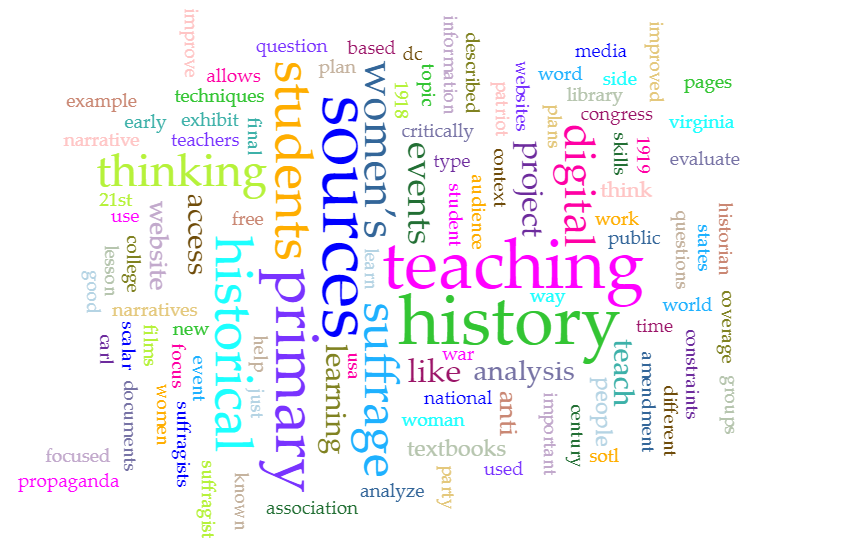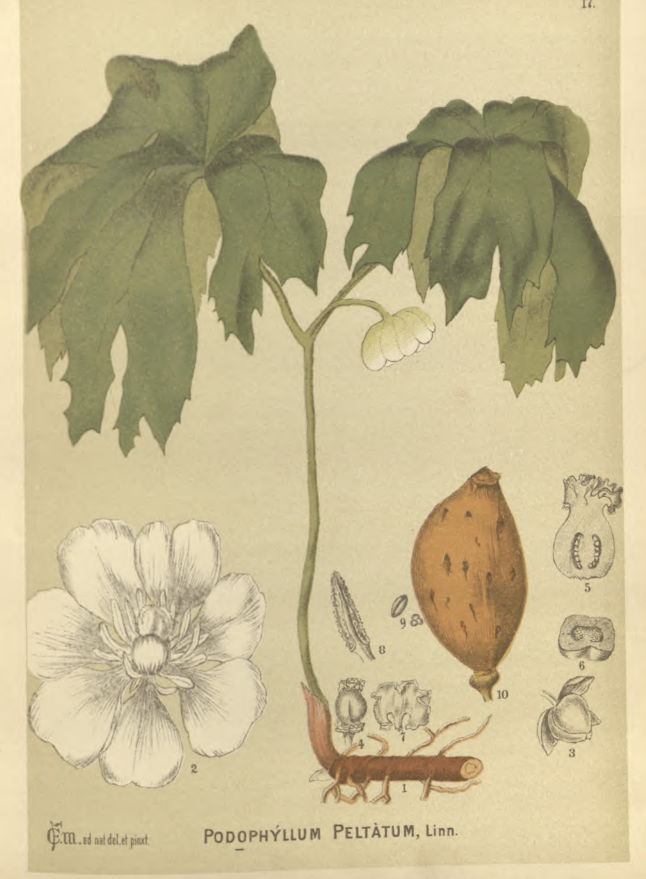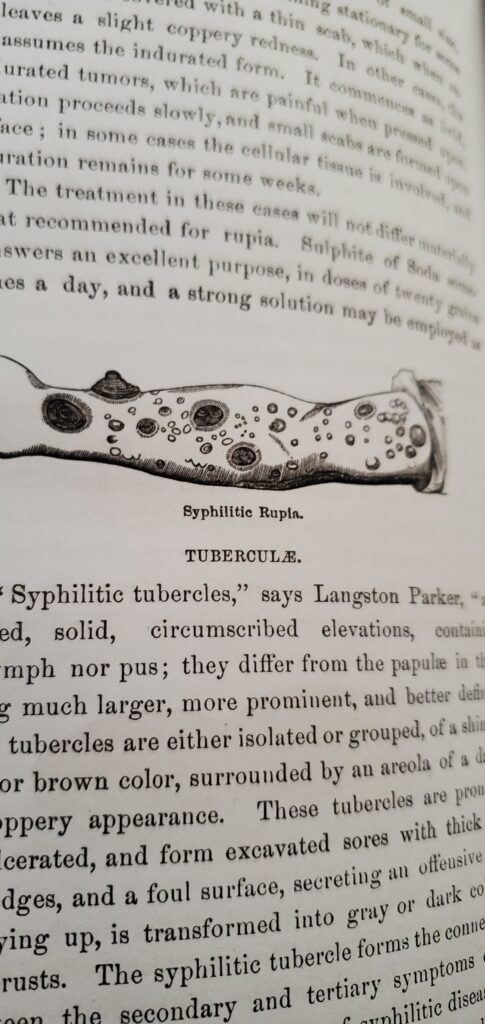
Stéfan Sinclair and Geoffrey Rockwell, “Cirrus”, Voyant Tools, accessed July 2, 2022, https://voyant-tools.org/?categories=853c7c65560b565369c1c9d2b36b3a24&visible=105&corpus=4827e509dd3cd151a1868d76052a5b4f&view=Cirrus.

Stéfan Sinclair and Geoffrey Rockwell, “Cirrus”, Voyant Tools, accessed July 2, 2022, https://voyant-tools.org/?categories=853c7c65560b565369c1c9d2b36b3a24&visible=105&corpus=4827e509dd3cd151a1868d76052a5b4f&view=Cirrus.
Where do I begin? Instagram, Twitter, YouTube, and now TikTok are all platforms that can be utilized to tell history in novel ways. These are just some social media ways to draw attention to an account you know and want to tell. You cannot leave out audio platforms like SoundCloud for oral histories and podcast hosting sites like Spotify. Public historians should familiarize themselves with as many of these platforms as possible to increase the visibility and knowledge of the story they want to educate their audience on. Museums that have developed their web apps and intensive builds allow the museum-goer to get an interactive experience while visiting the museum.
Technologies that have influenced my own work and have been imperative to my learning in digital humanities, include google products like Google Timeline, N-Gram Viewer, and Google Scholar. The word mapping analysis, making interactive maps, and other more technical tools of digital humanities has had a steeper learning curve to learn. My personal social media preferences are twitter and Instagram. I feel that is due to my limited time to interact overall. The most effective history on these social media sites have been either stories in small snippets, or Instagram pictures of museum exhibits as a virtual tour. In the time of Covid, virtual tours, virtual 3D exhibits, and even online lectures from museum curators/historians have been the most effective.

Medicinal plants : an illustrated and descriptive guide to plants indigenous to and naturalized in the United States which are used in medicine, their description, origin, history, preparation, chemistry and physiological effects fully described …By Charles Millspaugh. 1887. Philadelphia : J.C. Yorston.
This beautiful book is in the public domain and he describes the plants used by eclectic medical doctors, especially this one, podophyllum. I met with my professor and I was quizzed to ask three non medical friends about interest in this topic or website. The answers were of course, sex, or complete quackery, so that is easy to do as eclectic physicians believed that excessive masturbation led to insanity, and there were multiple plant based treatments to decrease these impulses. I was horrified to read in the Diseases of Women textbook by Dr. King that the treatment for nymphomania, or over masturbation was excision of the clitoris. Somehow I now need to make this into the website.
The Technical challenges are the landing page is classic Omeka, and I do not know how to do shortcodes, so my landing page still is limited, it is better than it was, and I will keep messing with the appearance settings until I get it right.
Today, I posted a picture of a syphilitic infected arm from one of the textbooks written on venereal diseases by the Eclectic professor, Dr. Scudder. I used this to grab attention to the project without being too graphic. The project is coming along slowly as I have text to fill out for the pages and to continue finishing transcribing the cases. I need more images to break up the text. Social media wise, I do not have a ton of followers and have been debating about setting up a separate account for school versus personal. I also should get on TikTok but I am not sure about doing a video for my website or if I even should consider that to get interest about it. I am mainly trying to focus on finishing pages for the website itself. Interestingly, the eclectic medical institute did graduate more women doctors than other schools. I am trying to research who some of those women are to get a throughline of women patient cases and then also women as eclectic physicians. It is a slow going process.

CLIO REVIEW
Virginia Women in History-Fredericksburg Region
This is a mobile driving tour on Clio website that was written within a larger Library of Virginia website. Not sure what I was expecting but I thought there would be more women who lived here that were important to history. I think due to it being part of a larger website that it was limited and there were only fairly recent historical women to be highlighted. The mobile site does not list Mary Washington and no one from before the nineteenth century.
For a mobile tour of where these women lived is a bit disappointing, rather it is just a way to give the person information about a few examples of women who lived in the Fredericksburg area. As a mobile tour site, there is the google map and the driving directions. For a mobile app-based website though, I can’t imagine anyone would actually do this driving tour as it is just a few places and the locations of where they lived are not historical architectural sites. Did I really need to know where these women lived? No.
The historical information is good on each woman and how they contributed to the area, and I found the the small snippets informative about the contribution of each woman. Instead of a driving tour, somehow a different mobile format would have sufficed to learn about these women. I definitely would not have found it without the Clio website link, and I was just trying to branch out from the typical battlefield walking tours around the area.
There is a Clio Fredericksburg Walking Tour of different sites and Museums that does a better job than this Clio site, but it is not truly a historical website like this one. Overall, there could be significantly more work done on Clio for this area that is not strictly battlefield related. This format for a mobile driving tour to catch your attention about historical women from Fredericksburg is not a great format for this knowledge.
Mobile Websites
Education and Outreach on behalf of the Library of Virginia. “Emily White Fleming.” Clio: Your Guide to History. February 21, 2018. Accessed April 9, 2022. https://www.theclio.com/tour/250/1
This is a quick update after our class meeting last week. Suggestions from class, I need a throughline like a podcast with the same name for my website. I am working on the concept of women in medicine and how they were treated in the gilded age. The pages outline is there but still working on getting images and the textual discussion. I plan to do work on the history of what was eclectic medicine and how the largest medical school of eclectic medicine had textbooks that rivaled allopathic medical schools. Within this history is the history of these professors and how they treated women patients while also accepting more women in their ranks than in traditional medical schools.
Technically, I downloaded a different Omeka theme that is bright and more consistent with the Gilded Age. I want to continue the transcription of the case notes while putting in the images of some plants and information about the history of women as patients. Interestingly, the cost of medicine for the time was high and was paid per the ledgers without difficulty.
For the assignment on oral history and the free indexing, synopsis, and metadata program at the University of Kentucky, I found a SoundCloud release that had neither a transcript nor indexing. I could not get SoundCloud to embed into the program on the metadata page. I was able index it and tag per segment without any difficulty. I also tried to get the OHMS application to work for Word Press and made a seperate website but was running short of time, so I abandoned this. The program itself is easy to use and I see its utility for large oral histories. I am reading FDA oral transcripts for information for a paper that I am doing in my other class and having these indexed with easier searching would be helpful.
https://ohms.uky.edu./subject.php?id=109777
I tried to embed but not currently working.
Demographic: Gen Z and Millenials
Descriptive Title: full time history teacher and mom of 2 kids
End Goals:
She likes websites that are entertaining while teaching something new. As an AP history teacher, she is a stickler for citations and expects websites to also have good sourcing. She also does not like complicated websites, would like lesson plans included for some museum sites and public history sites to have additions to her curriculum. She likes collections of primary sources for her students to do their own projects. Mobile and accessible is also important. United States history that is offbeat to get her classes more interested in history is also important.
Quote: I like to challenge my students and have them learn rare things about history.
A Day in a Life Narrative:
Gets up and gets kids to school with a husband who is remote working from home. She now is teaching again in person and teaches high school AP history. She likes to garden, go to farmer’s markets, and likes learning new facts and things from the past. Drinks a lot of fair-trade coffee for energy. Brings up things she has learned about the history of plants, coffee, and teas to her AP USA history class. Likes to teach critical thinking about primary sources to the class. With that, she is always looking at history blogs, history archives that are not always about traditional USA history. Once home, she sits with the kids and husband for dinner and reviews lesson plans and assignments.
End Goals:
She likes websites that are clear story of content. As an AP history teacher, she is a stickler for citations and expects websites to also have good sourcing. She also does not like complicated websites, would like lesson plans included for some museum sites and public history sites to have additions to her curriculum. Mobile and accessible is also important. United States history that is offbeat to get her classes more interested in history is also important. History websites that have primary sources for students to do their own projects and for herself.
Persona 2
Name: Maureen
Demographic: 55 yo divorced mother of one son
Descriptive Title: Healthcare administrator at a large medical system who likes medical history
Quote: I like to read medical mysteries.
A Day in a Life Narrative:
She gets up and heads to work on her computer as she is in a covid pandemic yet can do her finance officer work at home. She is in meetings all day long and has one adult child in medical school. She got a biology degree herself but focused on botany. She ended up getting a master’s in healthcare administration. She goes to medical museums with her son, and they like to comment on how far medicine has come. She is on the internet all day, so it is usually Facebooking when she looks at anything fun. If she sees websites that are about history, she favors things that remind her of tv shows she likes, like Call the Midwife or Gilded Age.
End Goals:
Wants medical mysteries or weird medical history to keep her interest in any public history websites online. Considers herself a feminist and wants to know more about gender history, like learning about women in medicine, or about the history of how the medical profession treated women in the past as patients. The website needs to be easy to use and since her eyesight is getting difficult on computers due to being on one all day, asks for and appreciates large fonts, and easy-to-read contrasting colors. Her son likes learning about weird plants in medicine like she does. Likes a lot of images and the stranger the better to hold her interest for a history website. She does not want just to learn but wants to be entertained by history on past quack medical treatments. Her son likes learning about weird alternative medicine as well and will share with his friends in medical school.
VR and AR of museums and locations that people are remote from or unable to travel allows the ability to see full exhibits and the museum without travel. This type of technology allows the learning of material culture and art without having to spend large amounts of money and time to travel to these museums. Games that incorporate VR and just regular video games are vastly different from VR/AR of museum spaces. The interaction of both can be similar of images, buildings, and art. The difference is that games are one of game theory and fun for learning history whereas some younger students may be bored with basic museum exhibits in VR format. The best historical events or themes are of course military battles. Military battles with distinct armies, tanks, troop movements are finite and best suited to game formats. Teaching traditional history in a game format way, would be like fishing with a AK-47. You may get lucky and learn a little but otherwise learning from books, teachers, and audio is better for retention of the material. Digital history can definitely teach the material, I am just not convinced that video games are the best at truly learning the whole story or nuance within topics of history. As they can complement lesson plans and books, make it more entertaining for students, games definitely improve retention of material. VR/AR technology allows recreation of events that can be static or interactive. Both allow the non-historian to have fun while learning material and allow museums to teach the public who otherwise could not visit.
Voyant tools helps analyze the WPA narratives for the prominent words by states and interviewees. These tools can then complement the textual analysis of words from Voyant into graphs and mapping. Kepler.gl shows specific places of people in time and space. Timelines and the interviewees can be easily cross referenced between all three software platforms. Using these three tools, the researcher can evaluate hypothesis about the narratives, like topic specific research or keywords from the narratives. For example, war stood out in the voyant tools, but was found to be spelled that way for the word, “were.” In the kepler.gl software, topics and words were not as prominent. It is a mapping tool that can be layered with multiple types of information. For the project practice of WPA slave narratives in Alabama, the user is able to see distances of travel from enslaved to where people had settled. The user can further make different maps of where the interviews occurred, nodes of how large a topic was or interactions. Visually the maps allow popup information and can be as detailed or limited as needed for clearer map visuals. The software tool, Palladio, is a different type of mapping tool yet is a complement to kepler.gl. Both can function as traditional maps of people moving over time, but both take analysis further than just movement. In Palladio, network graphs can be illustrated from the data from the WPA narratives. Specific topics can be linked to either the interviewer, or by type of slave, or by gender. While for this specific database, the networks at times did not reveal any larger patterns compared to voyant and reading the text, it adds a visual element for learners without reading and analyzing the entire interviews in Alabama. All three have their limitations but together, the interviews can show linkages, and distinct history about the enslaved, and the history of the narratives.